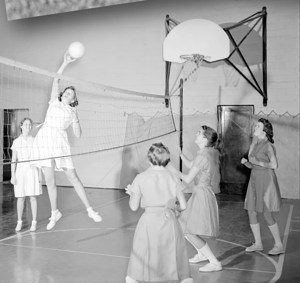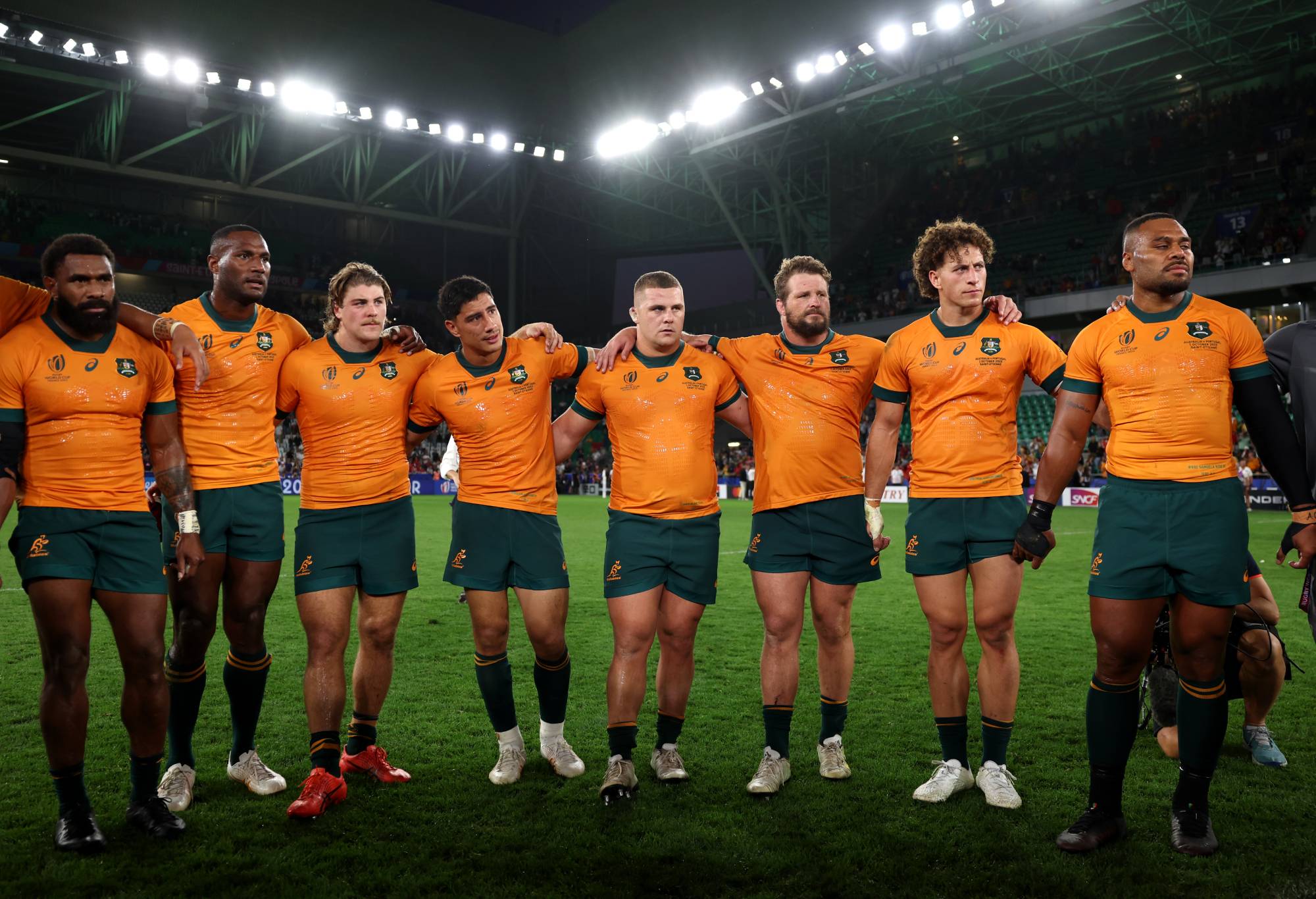Team dealers and road salespersons new to the industry might think that volleyball standards have always been aluminum or carbon fiber installed in floor sleeves.
This is far from the truth.
As in all sports, innovative manufacturers, coaches, independent inventors and players are always searching for the “better mousetrap,” or in this case, better volleyball net systems to meet changing needs.
The game of volleyball was first introduced in 1895 at the YMCA in Holyoke, Massachusetts, by William Morgan, four years after basketball was invented by James Naismith a couple miles down the road in Springfield. Both sports are truly American in their origin but have become popular worldwide.
The earliest net systems were likely homemade, with nets mounting to walls or other fabricated posts that attached to floors, to walls or both. As the sport of volleyball became more popular, both the rules and the equipment began to evolve. As recently as the early 1970s most indoor competition net systems included portable bases that attached to the floor and sometimes by cables to the wall depending on gym configuration.

Setup was time-consuming, floor attachment was undependable and wall cables created added safety concerns.
Beginning in the late 1970s, today’s floor socket designs with rigid — but heavy — steel standards became popular and most manufacturers offered two or three models with different features and price points.
In the mid-1980s, the first aluminum standards were introduced to the U.S. market from the Netherlands. While these 4-inch diameter standards were lighter weight and easier to set up, they lacked the rigidity needed for maximum net tension.
Bison was founded primarily as a basketball equipment manufacturer but first introduced their own design of steel volleyball net systems in 1991.
Recognizing the need for lightweight systems, but with improved rigidity, in late 1998 Mike Brown and Terry Schiltz of CenterLine Sports brought a superior telescopic aluminum system to the market. Based on its computer-designed aluminum extrusion shapes, this 3-inch diameter system not only fit in existing 3-inch sockets but was almost as rigid as steel and dramatically more rigid than 4-inch aluminum systems on the market.
Bison expanded its volleyball offerings by purchasing CenterLine Sports in 1999 and in December 2000 became the first official supplier of volleyball equipment for the National Federation of State High School Associations. Bison has continued to improve the design of VB1000 CenterLine Elite and it is still one of the most popular systems today.

As aluminum net systems began to dominate the market, manufacturers continued to search for even lighter weight and more rigid materials.
Carbon fiber was a natural choice. Sports-equipment inventor and entrepreneur James Gravel first introduced Bison to his early carbon-fiber prototype in 2004. Over the next two years, Bison worked with Gravel to fine-tune his concepts and brought the first carbon-fiber competition volleyball net system to the market in late 2005.
It was introduced at the 2005 Athletic Business Trade Show and gathered a lot of attention and soon other manufacturers followed. In addition to being “lighter than aluminum but rigid as steel,” VB7000 CarbonMax features a unique internal mechanism to raise and lower the net height with an integrated hand crank. Since the introduction of CarbonMax, Bison has added Lady CarbonMax which is designed exclusively for women’s-height volleyball and the super popular CarbonLite. Despite its cost, carbon fiber is becoming increasingly popular, thanks to Bison’s initial introduction.
At the same December 2005 Athletic Business Trade Show Bison, owner Nick Cusick had time to kill and began thinking about the next innovation in volleyball net systems. Looking at a portable basketball system in their booth, he wondered why a similar concept couldn’t be used to develop a totally freestanding, ballasted volleyball system for use in facilities where floor sockets were either impractical or impossible.
Bison Arena volleyball system was born and Bison now offers Arena II, Arena Jr., and QwikCourt– all totally free-standing volleyball systems.
When 92,003 fans watched the University of Nebraska/Lincoln Cornhusker Volleyball Team play the University of Nebraska/Omaha at Memorial Stadium on August 30, 2023, setting a WORLD record for any women’s sports event, few, other than a handful of Bison employees, knew that they were playing on a Bison Arena II Portable System, one of Bison’s innovations that continues to shape the evolution of competitive volleyball net systems.

Other Bison volleyball firsts include:
- Free lettering or graphic post padding with most systems
- Lifetime warranty, 100% machine-worn gear winch
- Unique grooved top rope guide replacing pulleys
- Kevlar top net rope replacing steel cables that fray, tangle, and kink
- Bottom and side rope quick-release ratchet tensioners
- Permanently engraved net height markings.
Bison is proud to have produced these “firsts” as it continues to keep up with the needs of coaches, players, facilities and their dealers while continuously looking for ways to improve equipment. As a privately held domestic manufacturer, whose founder Nick Cusick is active daily in business operations, Bison is agile enough to bring to the market new technologies as the sport evolves.
When you are ready to upgrade your volleyball system, make Bison your first call!



















You must be logged in to post a comment Login